See DemandJump in Action
By embracing DemandJump's approach to SEO, we have been able to increase our organic rankings within just 2 weeks of implementing recommendations. This helped us see a 22% increase in organic search month-over-month.
Robert Jacko Vice President Digital Marketing @ Homage
DemandJump has become a crucial extension of our marketing team, providing game changing insights to fuel and propel all aspects of our digital marketing efforts. The DemandJump platform is a must have, we are seriously impressed.
Tim Lavinder Director of Ecommerce @ Hotsox
We used to spend hours looking for insights in dozens of tools and reports. Now we log into one place to find out what customers are doing and how to meet them where it matters most.
Zach Roop Digital Marketing Manager @ Dometic
We use DemandJump recommendations as our digital to-do list. We love going in and seeing the recommendations and knowing what to do next.
JoLynda Wilson Marketing Director @ IWC
Trusted by Brands Around the World
DemandJump Product Suite
Eliminate wasted time and spend. With DemandJump's content, insights, and attribution
you will know with certainty how to win by aligning your marketing to actual consumer behavior.
Content
DemandJump assembles the world’s data, creates networks of customer touchpoints around any topic or keyword, and tells you exactly what content to write, keywords to include, videos to produce, and much more.
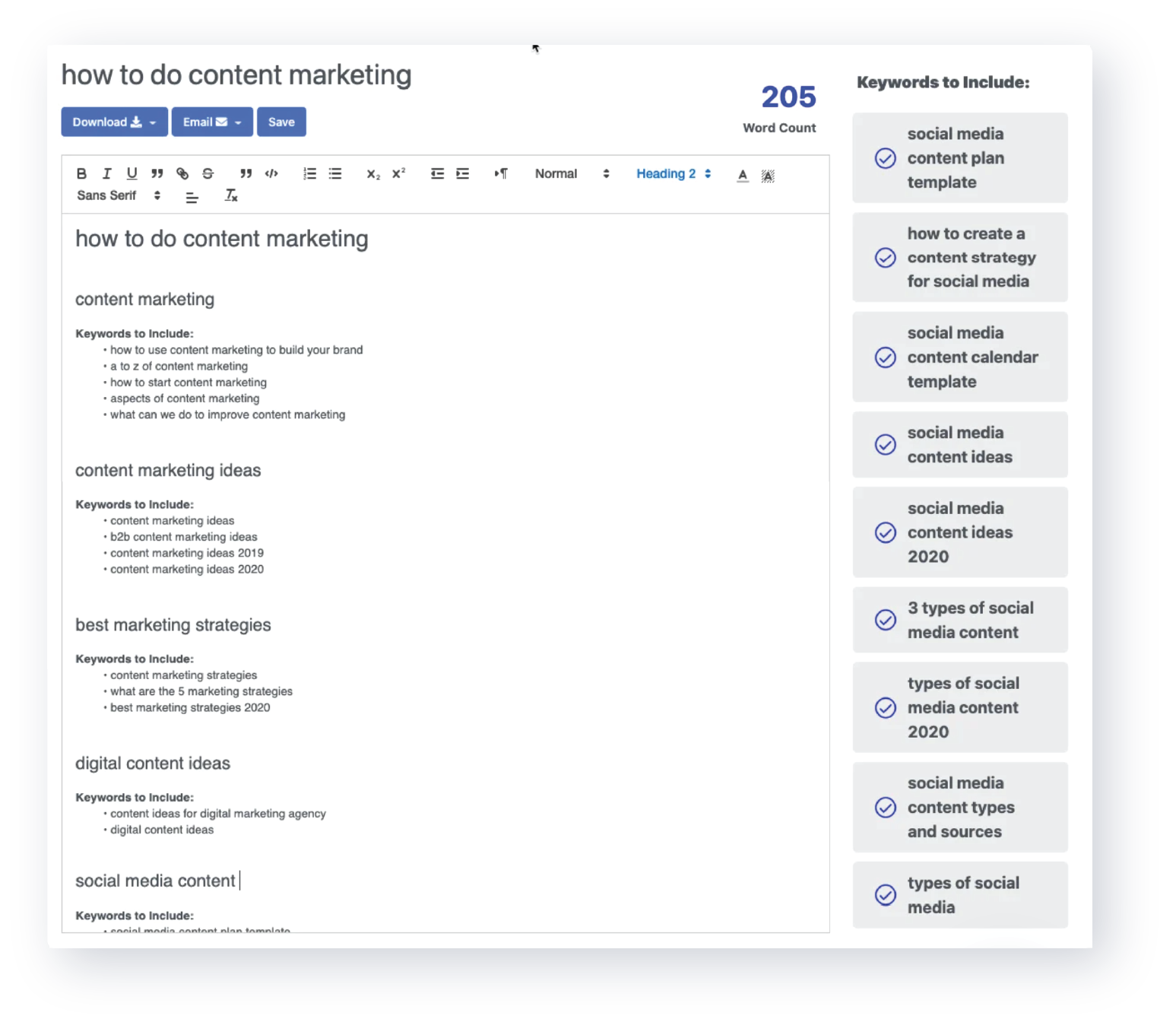
Insights
Find out what your target audience cares about for any category, product, or topic, with the click of a button. Gain market share by aligning your marketing efforts to actual customer behavior.
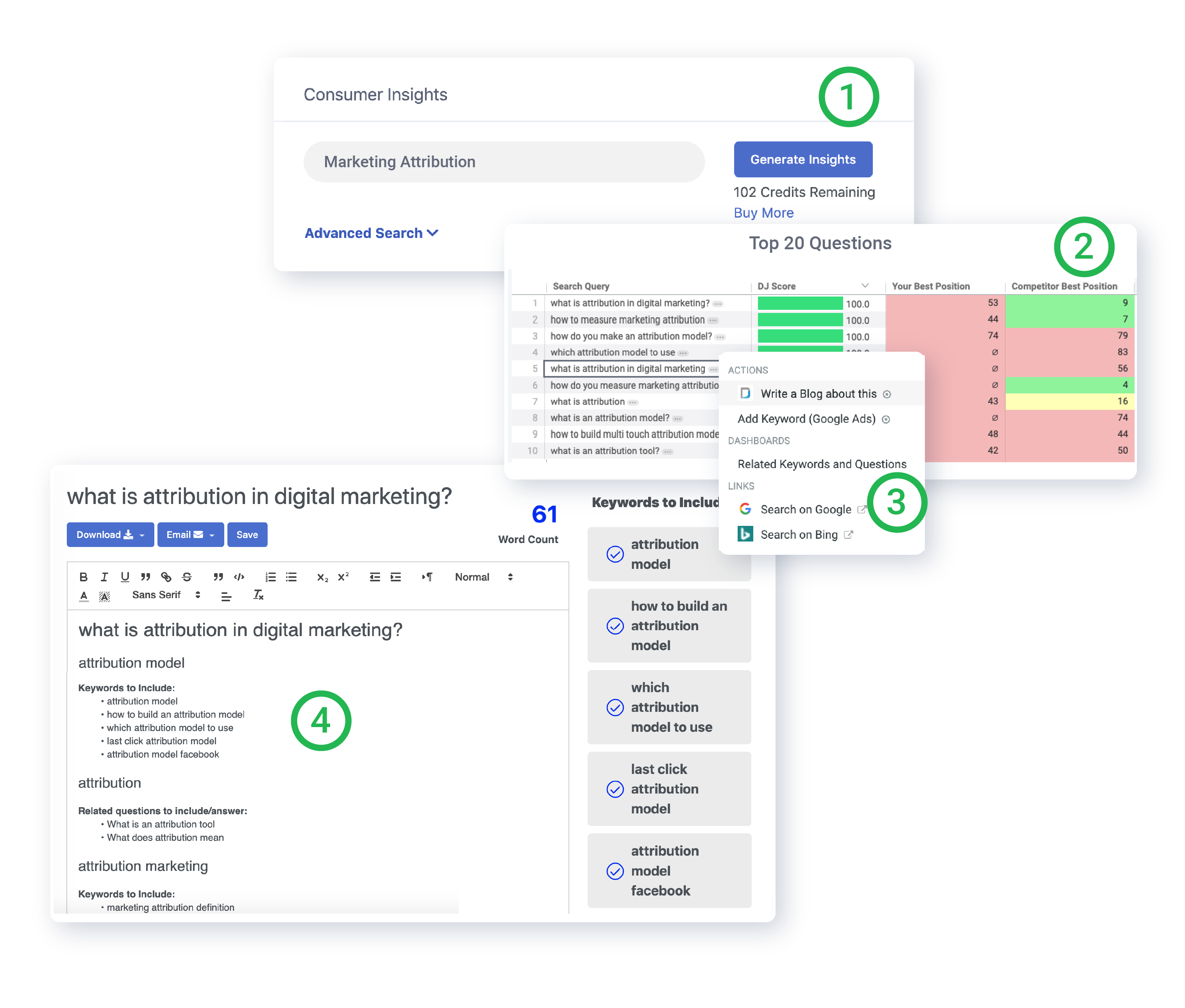
Attribution
Eliminate wasted time and spend. With DemandJump's automated account-based attribution solution you will know with certainty which efforts are driving ROI.
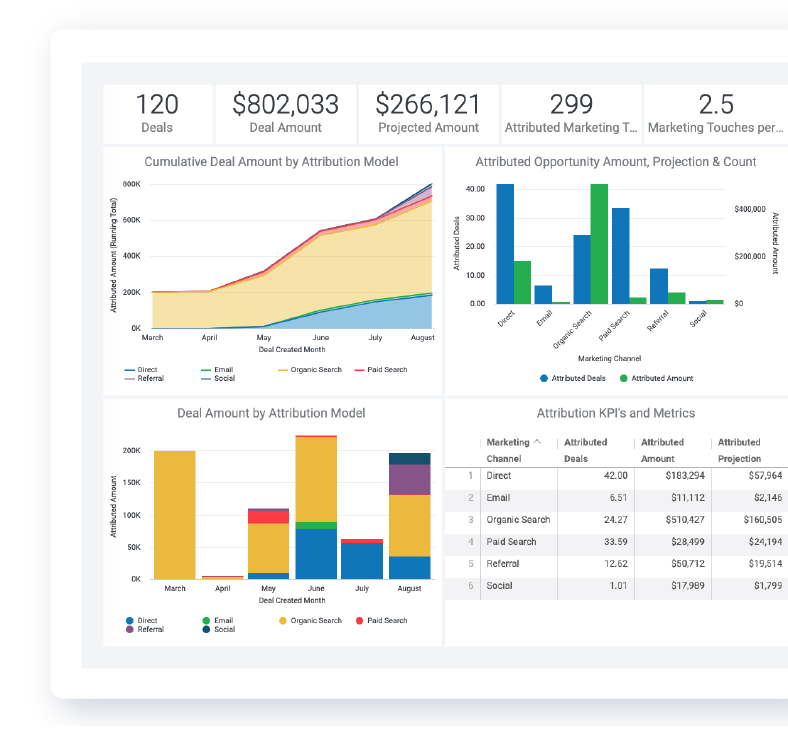
See a Demo of DemandJump
Market research is an important aspect of the success of any business. This process is ongoing for a company that wants to keep growing and intends to stay relevant in the marketplace. While there is certainly a great need to conduct market research before creating any marketing collateral, that's only one department where it's integral. Nearly every aspect of a thriving business is informed by market research.
A solid business plan starts with market research. Your information on the market will determine the type of product you sell, what type of services to offer, and what your marketing position is. Market research is business 101. In order to build a successful business, first you need to make sure that there's a need or want for your offerings.
Market research starts as soon as you begin to take the initial steps to build a business. But it's an ongoing process throughout the lifespan of your business in different departments. The marketing department will continually use market research to inform their campaigns and the various channels where they spend time and budget. Product development also relies on market research in order to create new products and services that cater to the current and future customer base.
This is a wide topic and a powerful tool that's essential to propel business in an intentional and strategic way. It's important to not only understand what market research is but also how it's conducted and used.
The advantages of market research
Market research refers to the gathering of information about your specific market and the health of your industry in general. It can include information that will help you cater to that market in different ways, from your marketing endeavors to the way that you organize your business and customer service initiatives. As you can see, market research is a wide topic.
Because there is so much possible information that you can gather, it's important to pinpoint your exact market and needs. Your market research might start with a larger quandary that includes an entire industry. From your research, you might find that there is a segment of the market that is being underserved or inadequately catered to. From this information you can clearly define your marketing position and help you to form your products and services to meet those needs.
The benefits of market research can't be overstated. If you're doing your due diligence, market research should be prioritized in any business or economic endeavor, from choosing investment vehicles to developing products and services.
Here are a few of the top advantages of market research
Conducting market research helps to:
- Establish your marketing position. Your market research on the competition and the overall market is necessary to develop your marketing position. This will inform who your customers are, who your competition is, and how you meet customer needs in a unique way.
- Focus on the customer. Your market research will help you focus on the needs and pain points of the customer to inform your marketing and product development.
- Develop your marketing strategy. Your market research informs your marketing strategy by showing you which markets you need to cater to. That information can help you choose the best channels and inform your overall marketing and content strategies.
- Develop and improve products and services. Market research offers you direct feedback from your ideal customers. You can use this information to find out exactly what needs your customer base has so that you can develop products for them, rather than trying to find a market to fit products you've developed. This process is far more efficient than the traditional route of building something and hoping to entice consumers.
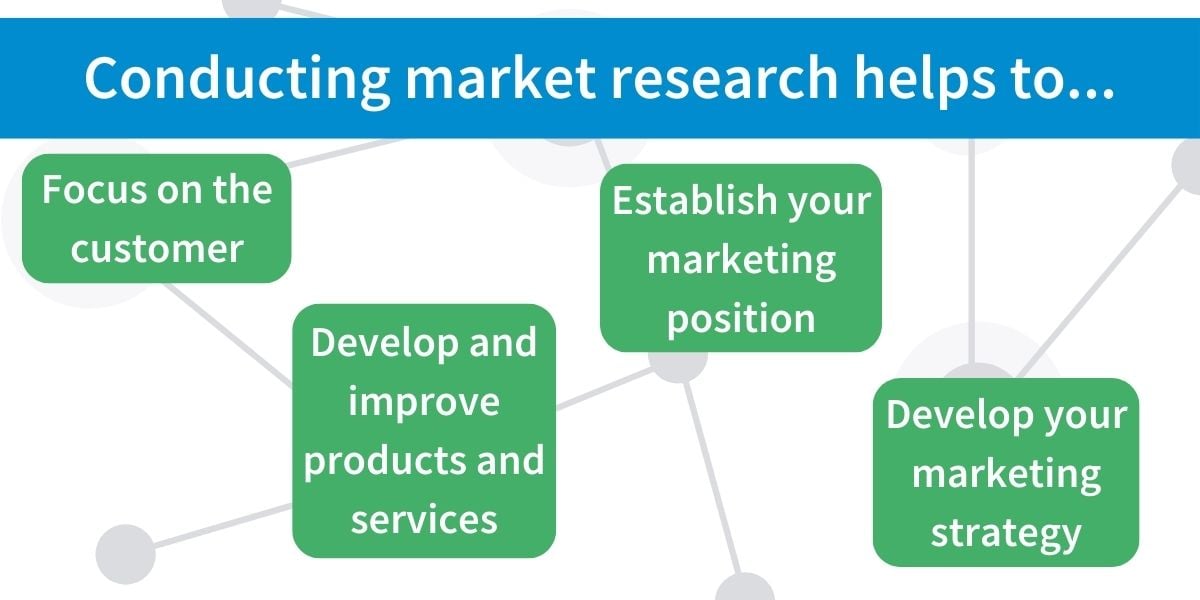
There are many benefits to using market research, but there are also a number of challenges in the process of gathering and using it. Market research can be conducted in several ways and can range in cost. Large marketing research projects might mean a long-term commitment and a large team of experts. Even smaller market research efforts include a lot of data. The challenge is in finding the data that's important and using it effectively. With access to so many pieces of information, it can be difficult to reach the right or most comprehensive insights that will inform and improve your business.
The market research report: using the data effectively
A standard market research definition tells you that it's information about your market. The trick is in compiling useful information that can inform your process for your specific needs. For example, a large company might conduct market research before redesigning their logo or brand. This research might be gathered through surveys and research marketing groups and may be informed by A/B Testing once they've narrowed down the designs.
Designing a logo or branding sounds like a small task but it is the image that people will think of with regard to your product. This seemingly small task may use several types of research in order to gather data. Then all the data needs to be analyzed in order to arrive at the best decision.
Once the analyst compiles all the pertinent data, they prepare a market research report. There are several types of reports that can be used effectively. An executive report is the most basic and would provide an overview of the market. This type of report is typically used to evaluate business models and decisions. It might suggest actions that need to be taken or pinpoint glaring issues. This type of report is the least costly but also the least detailed.
Specific product reports can be generated to look at the market for the product or service itself, rather than overall company wide goals and performance. This type of report might be compiled if a company was undertaking product development initiatives. This might include data from internal sources, as well as competitive analysis and general market research.
Reporting options can be developed specifically to meet your company goals and might answer time sensitive questions or overall business insights that the company would use for a number of years. The markets do change, so it's important to continually conduct market research. The alternative is waiting until your current method no longer fits the market but it's far more effective to stay on top of the trends than it is to come back after losing relevance in your industry.
Market reports can also include information about your competitors and how consumers interact with them in the form of Market Intelligence. These market intelligence reports can show you what websites, search terms, and influencers bring visitors to your competitors websites. With these insights, you can optimize your marketing channel performance and improve your marketing strategy by tailoring it to consumer behavior and insights.
Market research methods to consider
There are different types of research and sources which might be used during the market research process. Some of your sources will include primary research and others will be using secondary market research methods. Primary research is research that focuses on information gained directly from your market. This research is integral because it comes from the customer themselves. Your internal marketing analytics tools should also be used in your market research. This can include analytics on customer behavior, as well as overall information about the company or product performance over time.
You can use surveys or questionnaires to gather this information and you should also be using information culled from phone conversations and other communications. Reviews are also an excellent source of primary research.
Secondary research includes information you might find from third parties and public statistics. This information can also be invaluable when combined with data you've gathered on your individual market.
Innovative market research methods will use a combination of analytics and inference. Analysts can combine information they've gathered from several sources to reach market insights that can benefit the brand and the marketing efforts. For effective results, analysts use a combination of primary and secondary data.
When considering the benefits of primary data vs secondary data, it's important to recognize that both types of information have valid uses. Primary data is gathered directly from the customer base or by the company. This might include social mention monitoring, surveys, interviews, and any aspect of getting direct feedback from the client or customer about your individual brand. Secondary data is compiled by a third party. This data can include statistics from government sites, industry associations, and marketing associations. It can also include data you've gleaned on the overall market from some reputable outside source, such as a well known research group.
Primary data is an excellent source to gain insights on your own performance and brand recognition. It's incomplete without the ability to measure that success by the overall market trends. You'll also find that the second party data can help form insights to increase new customers and traffic.
Qualitative and quantitative research
There are two main types of marketing research - qualitative research and quantitative research. In a well-thought-out market research strategy, both of these types of research will be used. Each of these research models provides specific benefits. Using both allows your project the advantage of a more full picture of the market and your position in it.
Quantitative research deals with numbers and statistics. This type of data can help you test theories and ideas and will lend to more general facts or assumptions about the market. This data has to be measurable. So you would gather this data using current analytics and questions or surveys where numerical value can be assigned. This is the type of research you would use if you want to test a theory. Quantitative research is used in A/B testing, for example. This type of analysis is also used when judging the success of marketing campaigns.
Qualitative research deals with ideas and concepts. This type of research uses the data to develop larger theories about the market and psychological insights. It often helps give color or reasoning to the quantitative data you’re collecting. The information is often in words and questions or surveys are often not measurable in numbers. They may have a positive or negative connotation but the overall questions are open-ended to promote the ability to collect as much high quality feedback as possible.
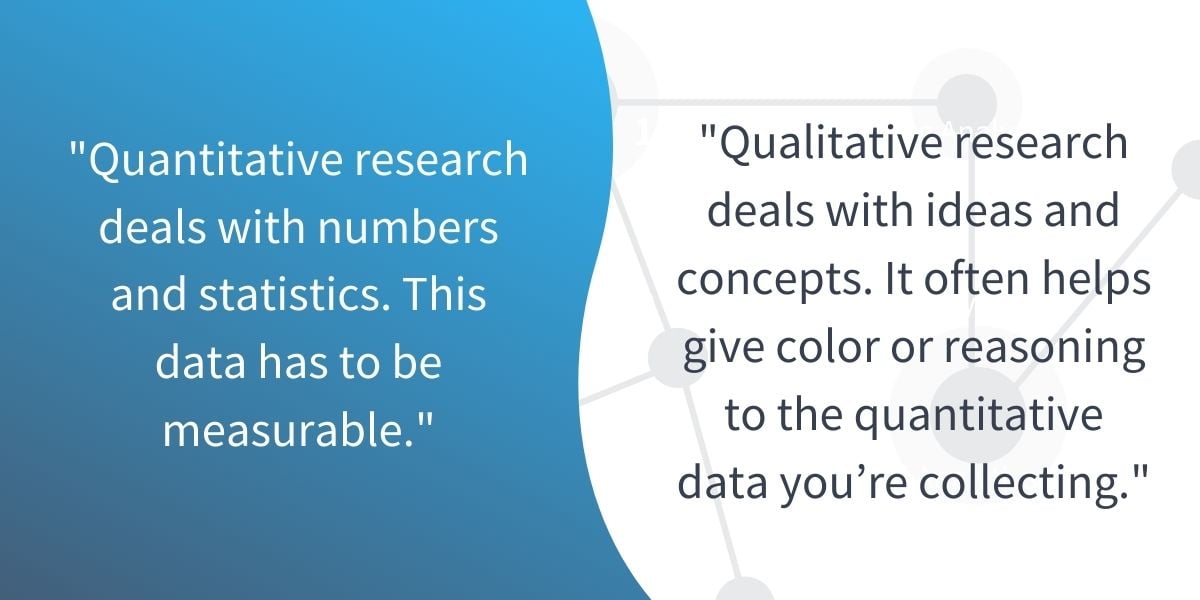
Using both of these methods allows you to develop market research that gives you a fuller picture of your customer base, their psychology, and your statistical performance. You can also use this reporting method to build projections based on current growth and possible growth dependent on changes made due to your market research findings.
The market research process
The market research steps are basically the same, regardless of your goals. You'll develop your own methodology and may use different types of sources to compliment your specific needs, but the steps themselves remain largely the same. You can work from the same market research process template for each endeavor to great success.
There are six basic market research steps:
- Identify Goals. The first step in any market research endeavor is to clearly outline what the research is meant to provide in knowledge and data. You need to know what questions you want to answer before you can adequately research them.
- Choose Your Methodology. There are different types of research methods which might include surveys, interviews, online market research tools, and other forms of data gathering. Once you know your goal, you need to decide what methods you'll be using to conduct the research.
- Set Up Your Research Project. This step might include drafting interview questions or creating a survey. It also might include organizing a market research group. The entirety of this step will depend on the specifics of the first two steps. This is where you prepare and launch your research project.
- Gather Data. You'll gather data on this project for as long as it's live. This might be a few hour process or a prolonged process with individuals adding information to a website or survey. The time span will depend on the parameters of the project.
- Analyze Data. Once you've compiled all the data, you'll need to create reporting options that allow you to analyze the information.
- Use the Market Research. Once you've reported on and analyzed your market research, it's time to put it to use. This step might include developing a statement for the shareholders or launching new initiatives to capitalize on the research findings.
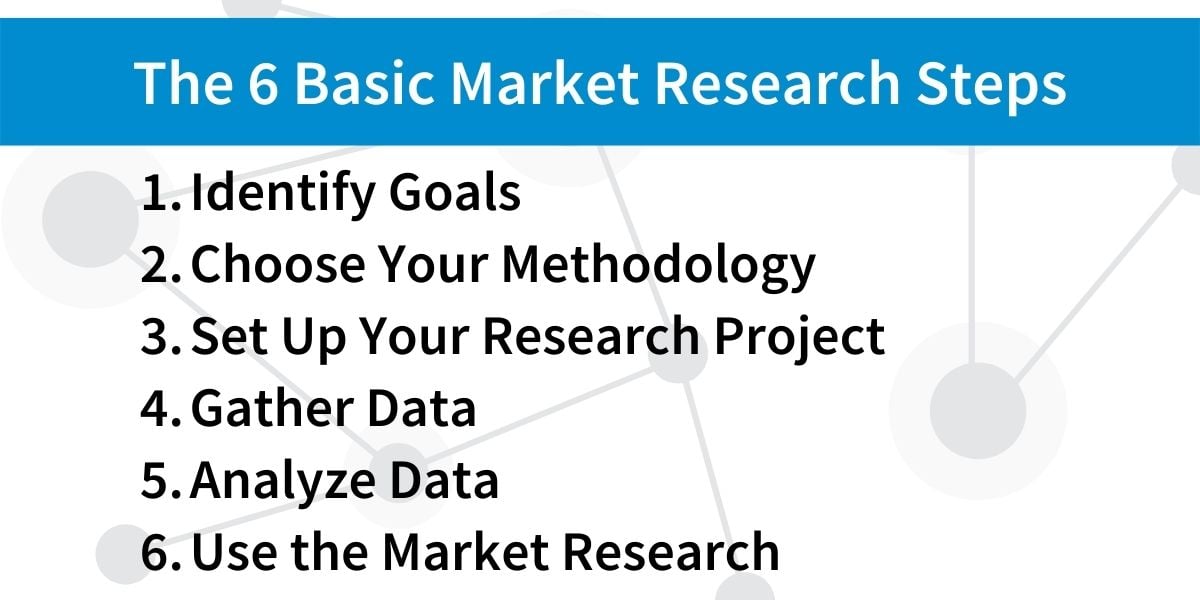
Successful market research examples
The best way to understand market research is to look to successful market research examples from well known companies. Market research as a field has been around for many years. The knowledge base has changed considerably and new tools and channels have completely revolutionized business.
Because this is such a cutting edge process with new platforms and methods of communication entering daily, it's best to stick with marketing research examples in business from recent years.
Starbucks
Starbucks is one of the best known and most trendsetting companies in the world. It's no surprise that they've revolutionized the industry but they've also used their marketing initiatives to kill two birds with one stone. Not only are they able to use their platform to provide constant customer service and further amplify their brand, they also use their platform to gather market research which then filters into new menu choices and company changes based directly on customer feedback.
Lego
Using market research doesn't need to be about customer service. Sometimes what you're looking for is information on new markets. Lego, for instance, was traditionally a toy made for boys. In fact, their data said that under 10% of their consumers were girls. They used that information to launch a market research endeavor to see what girl children wanted in their Lego experience and a whole new line of toys for girls was born.
Market research might be used to add new products or improve customer experience. It can also be used as a means to pivot your business focus. This happens when the product or company is not gaining traction and many innovative companies are using this exact method so that their market research informs their direction.
Market research is an important part of the process from inception through the entire lifespan of any business. It informs your market position, product development, and every step of the customer journey.
Resources
Channel Optimization
Consumer Behavior
Consumer Insights
Consumer Insights and Analytics
Competitor Analysis Tools
Content Marketing
Content Strategy
Cross-Channel Analytics
Customer Insight Research Techniques
Customer Journey Map
Market Intelligence
Marketing Analytics Techniques
Market Research
Marketing Attribution
Opportunities of Internet Marketing
Types of Consumer Insights





